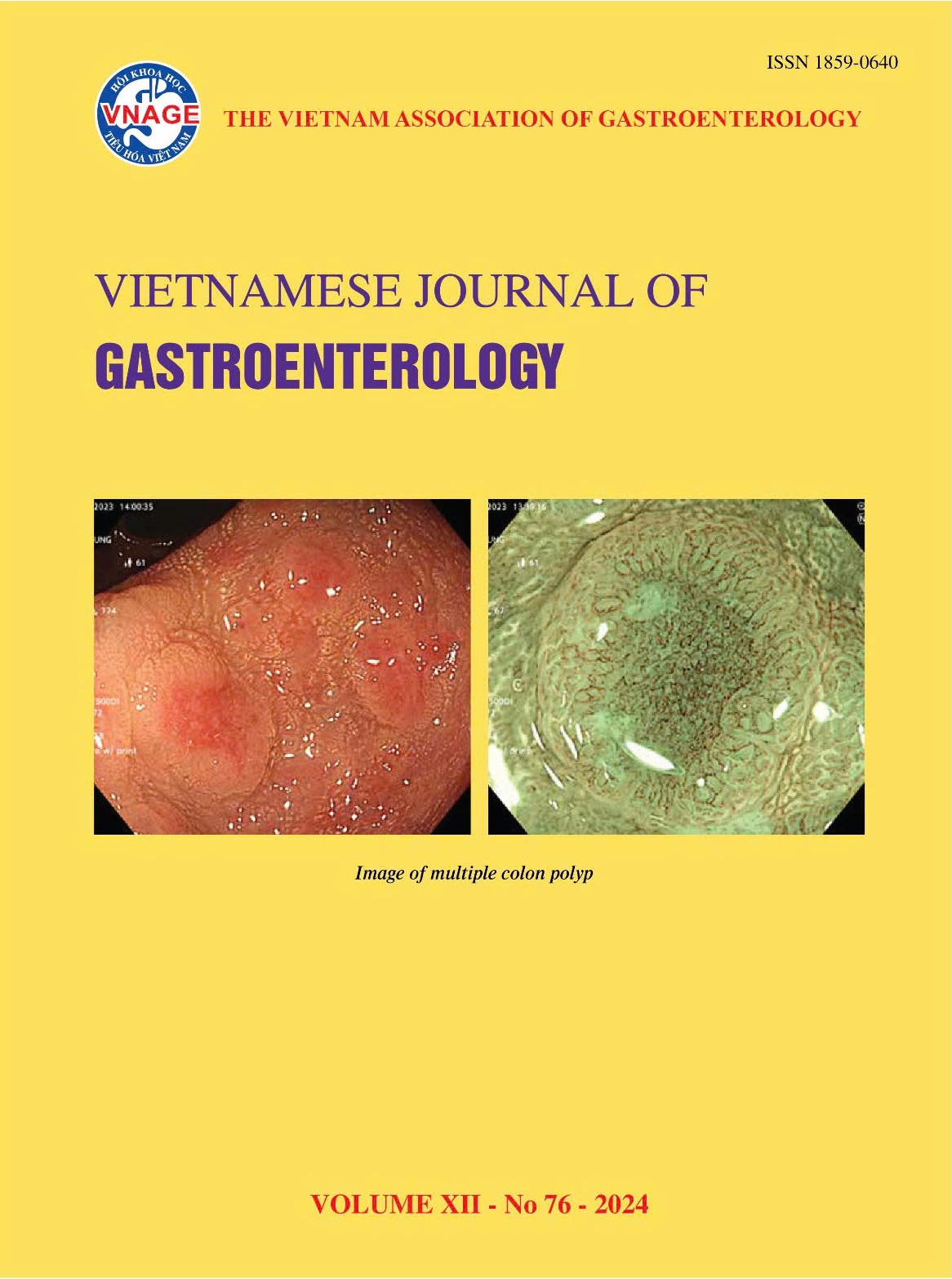Clinical and paraclinical features and their correlation with genotype and subgenotype c of hepatitis b virus in patients with hepatocellular carcinoma
DOI:
https://doi.org/10.63583/yk82gz64Từ khóa:
Hepatocellular carcinoma, Hepatitis B, Genotype, SubgenotypeTóm tắt
Objective: To describe the clinical and paraclinical characteristics and analyze their association with hepatitis B virus (HBV) genotypes and subgenotypes in patients with hepatocellular carcinoma (HCC). Subject and method: A cross-sectional study with prospective data collection was conducted on 129 patients diagnosed with HCC by histopathology, having pure HBV infection, and with complete HBV genome sequencing from January 2022 to December 2024. Result: Among 129 HBV-related HCC patients, genotype B (55.8%) was more prevalent than genotype C (44.2%). Genotype C was associated with older age (61.3 vs. 55.8 years, p<0.05), higher cirrhosis prevalence (78.9% vs. 55.6%, p<0.05), elevated viral load (6.8 vs. 5.1 log10 IU/mL, p<0.05), and more severe liver dysfunction. Subgenotype C1 (24.8%) demonstrated more aggressive tumor features, including larger tumor size (68.8% >5cm) and vascular invasion (43.8%) compared to B2. Multivariate analysis identified cirrhosis (OR=3.8) and high HBV DNA (>6 log10 IU/mL, OR=4.5) as independent predictors for genotype C. Conclusion: Genotype B (55.8%) predominates over genotype C (44.2%) in HBV-related HCC patients, with genotype C showing more severe clinical manifestations and poorer prognosis. Cirrhosis and high viral load serve as independent predictors for genotype C.
Tài liệu tham khảo
1. Foglia B., Turato C., Cannito S. (2023). Hepatocellular Carcinoma: Latest Research in Pathogenesis, Detection and Treatment. Int J Mol Sci, 24(15), 12224.
2. Arbuthnot P., Kew M. (2001). Hepatitis B virus and hepatocellular carcinoma. Int J Exp Pathol, 82(2), 77-100.
3. Ho P., Balzanelli M., Distratis P et al (2022). Characteristics of Hepatitis B Virus Genotype and Sub-Genotype in Hepatocellular Cancer Patients in Vietnam. Diagnostics, 12(10), 2393.
4. Chan H.L., Wong G.L., Tse C. et al (2009). Hepatitis B Virus Genotype C Is Associated With More Severe Liver Fibrosis Than Genotype B. Clinical Gastroenterology and Hepatology, 7(12), 1361-1366.
5. Kao J.-H., Chen P.-J., Lai M.-Y. et al (2000). Hepatitis B genotypes correlate with clinical outcomes in patients with chronic hepatitis B. Gastroenterology, 118(3), 554-559.
6. Ming-Whei Yu, Shiou-Hwei Yeh, Pei-Jer Chen,. et. al (2005). Hepatitis B Virus Genotype and DNA Level and Hepatocellular Carcinoma: A Prospective Study in Men. Journal of the National Cancer Institute, 97(4). 265-272.
7. Sumi H., Yokosuka O., Seki N. et al (2003). Influence of hepatitis B virus genotypes on the progression of chronic type B liver disease. Hepatology, 37(1), 19-26.
8. Chen C, Yang H, Su J, et al. (2006). Risk of Hepatocellular Carcinoma Across a Biological Gradient of Serum Hepatitis B Virus DNA Level. JAMA. 295(1). 65-73.
9. Liu C.-J., Chen B.-F., Chen P.-J. et al (2006). Role of Hepatitis B Virus Precore/Core Promoter Mutations and Serum Viral Load on Noncirrhotic Hepatocellular Carcinoma: A Case-Control Study. The Journal of Infectious Diseases, 194(5), 594-599.
10. Hwai-I Yang, Shiou-Hwei Yeh, Pei-Jer Chen,. et. al (2008), Associations Between Hepatitis B Virus Genotype and Mutants and the Risk of Hepatocellular Carcinoma, JNCI: Journal of the National Cancer Institute. 100(16). 1134-1143.









